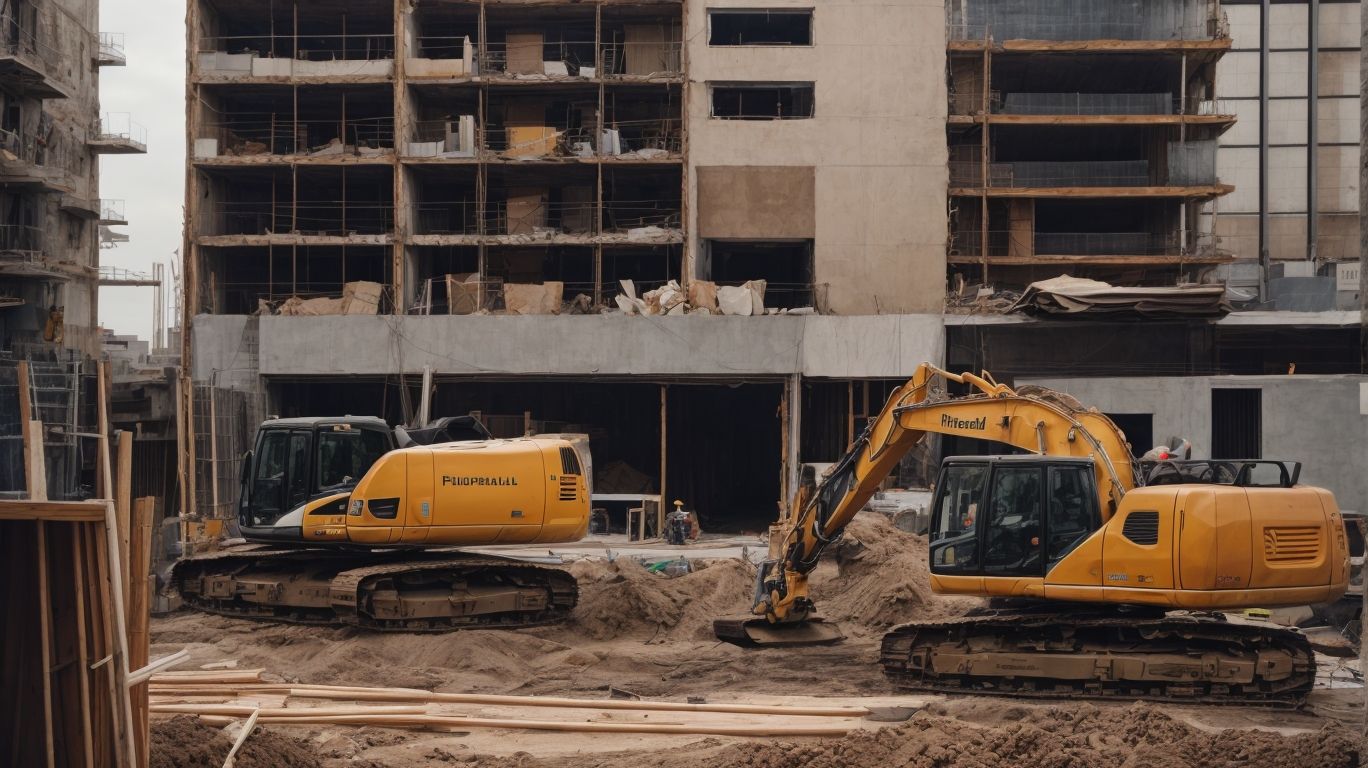
Tackling Structural Challenges in Urban SF Home Remodels
Are you considering a home remodel in San Francisco? If so, you’ll likely encounter a unique set of structural challenges that are common in urban settings. From limited space and outdated construction to zoning and permit restrictions, navigating these obstacles is crucial for a successful renovation project.
In this article, we will delve into the specific structural challenges that homeowners face when remodeling urban San Francisco homes, as well as provide valuable insights on how to overcome these hurdles. We’ll explore the numerous benefits that come with addressing these challenges, including increased property value, improved functionality, and compliance with building codes.
Whether you’re a homeowner or a professional in the construction industry, understanding and conquering these structural challenges is essential for creating the perfect urban San Francisco home remodel.
What are the Structural Challenges in Urban SF Home Remodels?
Tackling structural challenges in urban San Francisco (SF) home remodels involves addressing various complex issues related to construction, building codes, and zoning regulations.
These challenges often revolve around limited space, given the compact nature of urban SF homes. The older construction of these homes may present outdated features and potential structural damage, requiring thorough assessments and innovative solutions. Navigating through zoning and permit restrictions adds another layer of complexity to the remodeling process. Balancing these factors while striving for modern upgrades and improved functionality demands careful planning and expertise to ensure successful transformations in urban SF homes.
Limited Space
One of the primary structural challenges in urban SF home remodels is the limited space available, necessitating innovative solutions for space optimization and the implementation of open floor plans.
This constraint often leads homeowners and designers to explore creative ways to make the most of the available area. From utilizing multifunctional furniture to integrating built-in storage solutions, every inch of space is carefully considered to ensure efficient use. Open floor plans are increasingly popular, offering a sense of spaciousness and fluidity within compact living areas. By strategically placing furniture and using clever design principles, even the smallest urban SF homes can be transformed into functional and inviting living spaces.
Old and Outdated Construction
Dealing with old and outdated construction poses significant structural challenges in urban SF home remodels, emphasizing the importance of incorporating modern renovation trends and sustainable materials for effective upgrades.
This can be particularly crucial for homeowners looking to ensure their homes meet current standards and environmental considerations. By integrating sustainable building materials such as reclaimed wood, recycled glass, or energy-efficient insulation, the remodel not only enhances the aesthetic appeal but also contributes to a more eco-friendly living space.
Following renovation trends not only adds value to the property but also provides an opportunity to incorporate innovative technologies that promote energy efficiency and reduced environmental impact.
Structural Damage
Addressing structural damage represents a critical challenge in urban SF home remodels, necessitating the expertise of structural engineering professionals and effective cost management strategies.
These professionals play a pivotal role in identifying and resolving structural issues, ensuring the safety and integrity of the remodeling projects. Their expertise in assessing load-bearing capacities, seismic retrofitting, and foundation stabilization is indispensable for mitigating structural damage.
Integrating cost-effective solutions, such as value engineering and material selection, is essential to manage expenses while maintaining structural integrity. By leveraging these approaches, homeowners can navigate through the complexities of structural damage, ultimately achieving successful and sustainable home remodels in urban San Francisco.
Zoning and Permit Restrictions
Navigating zoning and permit restrictions presents a significant structural challenge in urban SF home remodels, requiring a comprehensive understanding of city planning processes and the city permitting process.
This involves a multifaceted approach, addressing factors such as building codes, historic preservation regulations, environmental requirements, and neighborhood impact assessments.
City planning processes dictate how properties can be used and developed, while the city permitting process involves intricate procedures for obtaining various permits, including construction, electrical, plumbing, and occupancy permits. Non-compliance with these regulations can lead to delays, fines, or even project shutdowns.
As such, engaging with professional consultants who are well-versed in zoning regulations and city permitting procedures is pivotal for a successful home remodeling project in urban SF areas.
How to Overcome these Structural Challenges?
Overcoming the structural challenges in urban SF home remodels requires a strategic approach encompassing innovative design, architectural expertise, and the careful selection of proficient contractors.
These elements play a crucial role in turning an urban SF home remodel into a success story. Innovative design solutions can maximize space in compact urban settings, while architectural considerations ensure structural integrity and seamless integration with the existing urban landscape.
The selection of competent contractors is vital for managing the complexities of city regulations and permits, as well as navigating the unique challenges of working within the confines of densely populated urban environments.”
Maximizing Space with Smart Design
Maximizing space through smart design is a fundamental strategy for overcoming limited space challenges in urban SF home remodels, involving the expertise of skilled interior designers and space optimization techniques.
It requires a keen understanding of the spatial dynamics within a home, utilizing clever layouts, multifunctional furniture, and innovative storage solutions to make the most of every square foot. The key lies in creating a seamless flow throughout the living spaces while ensuring that every element serves a dual purpose. By integrating customized built-ins and maximizing natural light, interior designers can transform cramped rooms into open, airy spaces that feel larger and more inviting.
Embracing a holistic approach, the smart design elevates the functionality and aesthetics, making urban SF homes more liveable and appealing.
Addressing Structural Issues with Professional Help
Addressing structural issues with the assistance of professional experts such as structural engineers and construction managers is vital for effectively managing and resolving construction-related challenges in urban SF home remodels.
Their expertise ensures that the remodel is executed with precision and in compliance with building codes and regulations. It also helps in identifying potential issues before they escalate, saving time and costs during the project.
With their guidance, homeowners can have peace of mind knowing that the structural integrity of their homes is being safeguarded by professionals who are well-versed in the complexities of construction management and structural expertise.
Understanding Zoning and Permit Requirements
A comprehensive understanding of zoning and permit requirements, in conjunction with the support of building inspectors, is essential for navigating and adhering to the regulatory aspects of urban SF home remodels.
This knowledge is crucial as zoning regulations often dictate the types of remodeling or construction that can occur in different areas of the city. The city permitting process typically involves detailed review and approval of proposed construction plans to ensure compliance with these regulations. Building inspectors play a pivotal role in not only enforcing zoning ordinances but also in ensuring that the construction meets safety and quality standards.
By following the protocols and obtaining necessary permits, homeowners can avoid potential legal and financial ramifications during and after the renovation process.
What are the Benefits of Tackling Structural Challenges in Urban SF Home Remodels?
Tackling the structural challenges in urban SF home remodels yields numerous benefits, including enhanced property values and positive impacts on the real estate market.
By addressing issues such as outdated infrastructure, cramped layouts, and limited storage space in urban SF homes, owners can significantly improve the functionality, aesthetics, and overall value of their properties. This can lead to increased buyer interest, higher selling prices, and a more competitive position in the ever-evolving real estate landscape.
Such renovations can contribute to a revitalization of the neighborhood, attracting new residents and businesses, further boosting the appeal and desirability of the area.
Increased Property Value
One significant benefit of tackling structural challenges in urban SF home remodels is the potential for increasing property values, contributing to housing equity and fostering community development.
Improving the structural integrity and aesthetics of homes in urban areas not only enhances the value of individual properties but also has wider-reaching effects, positively impacting the overall economic landscape of the community. By revitalizing and modernizing housing stock, the surrounding neighborhood gains appeal and becomes more attractive to prospective buyers and investors. This, in turn, can create a ripple effect, leading to improved amenities, increased business activity, and a sense of communal pride, ultimately contributing to a more vibrant and sustainable urban environment.
Improved Functionality and Comfort
Tackling structural challenges in urban SF home remodels results in improved functionality and enhanced comfort, particularly through space optimization and well-executed bathroom renovations.
These improvements help maximize living space in compact urban homes, creating a more open and functional layout. By reimagining the bathroom design, from storage solutions to modern fixtures, the overall comfort and convenience of the home are significantly elevated. The careful integration of smart storage solutions and multi-functional furniture add to the efficient use of every inch of the space, enhancing the overall functionality of the living area.
Enhanced Aesthetic Appeal
Another notable benefit of tackling structural challenges in urban SF home remodels is the creation of an enhanced aesthetic appeal through innovative design and adherence to contemporary renovation trends.
This approach results in visually striking spaces that seamlessly blend form and function, elevating the overall allure of the home. By integrating modern design principles, such as open floor plans and natural light enhancements, the remodels not only address structural issues but also enrich the living experience. The use of sustainable materials and sleek finishes further contributes to the upscale and stylish ambiance, aligning with the preferences of modern homeowners seeking a sophisticated, yet comfortable, urban dwelling.
Compliance with Building Codes and Regulations
By tackling structural challenges, urban SF home remodels can achieve full compliance with building codes and regulations, ensuring adherence to permitting requirements and receiving approval from building inspectors. This is crucial for ensuring the safety and integrity of the structure, as well as for avoiding legal penalties and project delays. Meeting these compliance standards also enhances the overall quality and value of the remodel, providing peace of mind for homeowners and ensuring the project’s investment potential.
The permitting processes and building inspector assessments play a pivotal role in this aspect, helping to verify that the remodel meets all necessary safety and construction standards, ultimately contributing to the success of the project.




No Comments